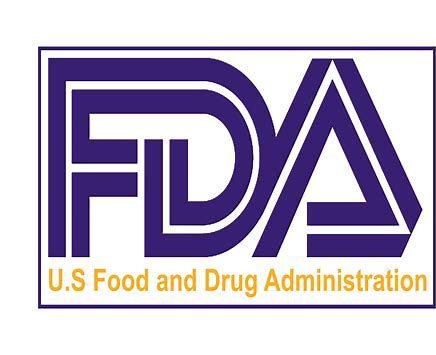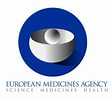Glycan Drugs
Relevant Links
-
 In US, it is the Food and Drug Administration (FDA) that approves and ensures the safety and effectiveness of all drugs for treatments. READ MORE
In US, it is the Food and Drug Administration (FDA) that approves and ensures the safety and effectiveness of all drugs for treatments. READ MORE -
 In Europe, it is the European Medicines Agency (EMA), which is a decentralized agency of the European Union (EU) responsible for the scientific evaluation, supervision and safety monitoring of medicines in the EU. READ MORE
In Europe, it is the European Medicines Agency (EMA), which is a decentralized agency of the European Union (EU) responsible for the scientific evaluation, supervision and safety monitoring of medicines in the EU. READ MORE -
 In Japan, it is the Pharmaceuticals and Medical Devices Agency (PMDA), which is the government organization in charge of reviewing drugs and medical devices, overseeing post-market safety, and providing relief for adverse health effects. READ MORE
In Japan, it is the Pharmaceuticals and Medical Devices Agency (PMDA), which is the government organization in charge of reviewing drugs and medical devices, overseeing post-market safety, and providing relief for adverse health effects. READ MORE
About Carbohydrate-based Drugs
Although Carbohydrates are known to play critical role in many biological functions both in the development and diseases, a very few carbohydrate-based drugs could be developed that have been approved for treatment due to various reasons. To date, only the following drugs are approved in US that are carbohydrate based:
Glycan drugs
Heparin: Approved in 1939 in US by FDA, this is perhaps the first carbohydrate-based drug commercially available in the market. It functions as an anticoagulant (blood thinner) to prevent and treat blood clots. This natural molecule was first isolated from the liver tissue of canines. Heparin enhances the activity of antithrombin, a natural protein that inhibits blood clotting factors. Since it was introduced commercially, it has saved countless lives by preventing dangerous blood clots (also, see below blood clotting carbohydrate-based agent, Vetigel).
Clinical Use: It is commonly administered intravenously in hospitals during surgeries, dialysis, and other medical procedures.
Tamiflu (Oseltamivir), a neuraminidase inhibitor, is an antiviral drug that blocks the actions of influenza virus types A and B. Neuraminidase is an enzyme present on the surface of influenza viruses. Find out here how it is used by the virus.
Other Neuraminisae inhibitors approved as drugs are: Zanamivir (Relenza), Peramivir (Rapivab).
The following carbohydrates are in the pipe-line as potential drug candidates:
Mannose plays a crucial role in the glycosylation process. In the context of Mannose Phosphate Isomerase-Congenital Disorder of Glycosylation (MPI-CDG; formerly known as CDG-Ib), which results from phosphomannose isomerase (MPI) deficiency, mannose supplementation has shown promise as a therapeutic strategy.
Vetigel, a product of Cresilon, Inc. (a NY-based company, earlier Suneris, Inc.) is a single use plant-based hemostatic gel designed to rapidly stop bleeding from traumatic wounds. Primarily used in veterinary medicine, this gel made from plant polysaccharides works by forming a mesh over the wound irrespective of its size or shape, which helps to seal it and stop the bleeding almost instantly (less than 20 seconds). On July 5, 2023, the company has received 510(k) clearance from the U.S. Food and Drug Administration (FDA) for another product, Cresilon Hemostatic Gel (CHG) based on this technology (US Patent:US20150231023A1) for human use in the local management of bleeding wounds such as minor cuts, lacerations and abrasions.
President and CEO of Cresilon, Inc., Joseph Alexander Landolina, developed this gel in the laboratory of Dr. Bruce Garetz while he was a student of Chemical and Biomolecular Engineering at New York University Polytechnic School of Engineering (now NYU Tandon School of Engineering).
This gel is a mixture of Sodium Alginate and Chitosan. Sodium alginate, a hydrophilic compound (see: Adamiak, K., and Sionkowska, A., 2023), is a salt of alginic acid, which is a linear copolymer composed of β-D-mannuronic acid (M) and α-L-guluronic acid (G) residues. Its chemical formula is \((C_6H_8O_6)_n\). Chitosan, derived from chitin, which is known for its hemostatic properties for clotting blood, is a long-chain polymer of N-acetylglucosamine, a derivative of glucose (see: Gholap AD., et al., 2024). Its chemical formula is \((C_8H_{13}NO_5)_n\). It is also biocompatible and biodegradable, making it suitable for medical applications. The combination of these polymers creates a mesh-like structure when applied to a wound. This mesh quickly collects fibrin, a protein essential for blood clotting, and forms a durable clot without the need for pressure. The dual action of chemical and mechanical bonding makes this gel highly effective in stopping severe bleeding quickly. The plant-based nature of the gel also means it can be absorbed by the body as the wound heals, reducing the need for removal.
Clinical Use: To stop bleeding in both external and internal wounds within seconds. This makes it particularly useful in various medical situations, such as surgeries and trauma cases, where rapid hemostasis is crucial.
Glycans have been used by the pharmaceutical industries for various purposes,
See:
- Carbohydrates as agents for diagnostic purposes:
- Carbohydrates as Conjugates:
- Carbohydrates for Vaccines:
- Carbohydrate as Scaffolds: